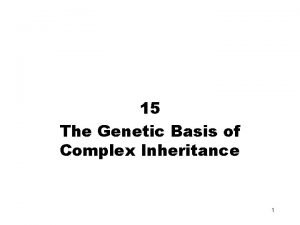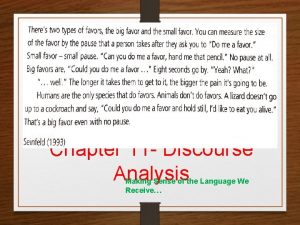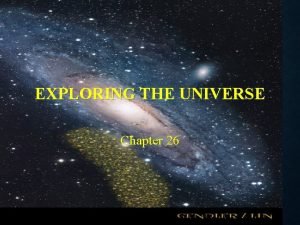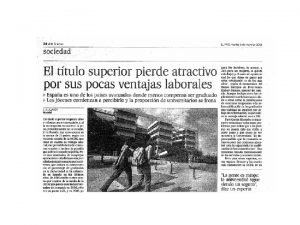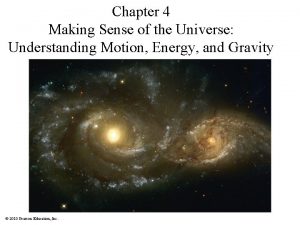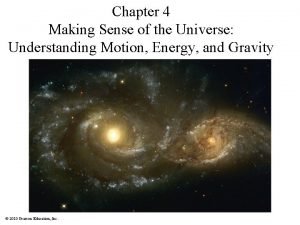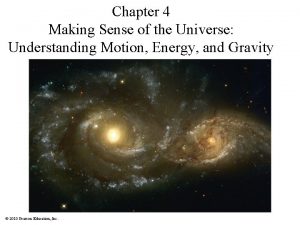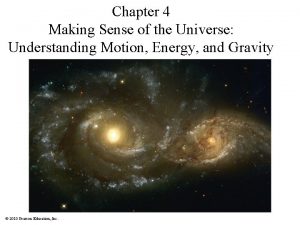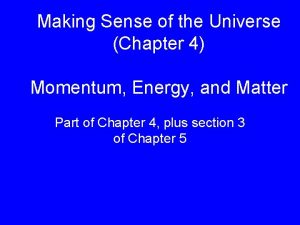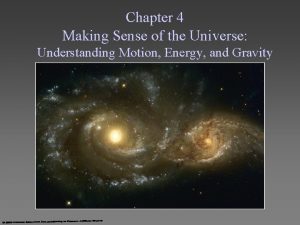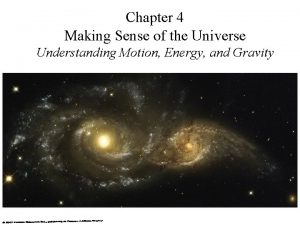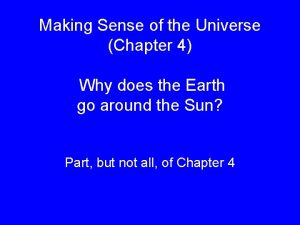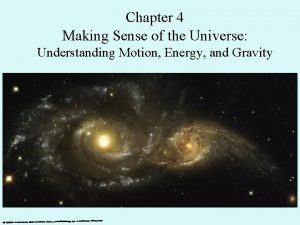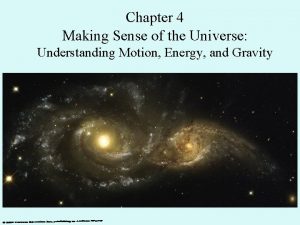Chapter 4 c Making Sense of the Universe

















- Slides: 17

Chapter 4 c Making Sense of the Universe: Understanding Motion, Energy, and Gravity “If I have seen farther than others, it is because I have stood on the shoulders of giants. ” — Sir Isaac Newton (1642 – 1727)

4. 3 Conservation Laws in Astronomy: Our goals for learning: • What keeps a planet rotating and orbiting the Sun? • Where do objects get their energy?

Three important conservation laws: • • • Conservation of momentum Conservation of angular momentum Conservation of matter and energy These laws are embodied in Newton’s laws, but offer a different and sometimes more powerful way to consider motion.

Conservation of momentum Momentum is mass x velocity P = mv In a collision, momentum before collision is equal to momentum after collision Momentum video

What keeps a planet rotating and orbiting the Sun? Conservation of Angular Momentum As long as Earth doesn’t transfer angular momentum to other objects, its rotation and orbit cannot change.

Angular momentum conservation also explains why objects rotate faster as they shrink in radius:

Where do objects get their energy? • Energy makes matter move. • Energy defined: Energy is the capability to do work. • Energy is conserved, but it can: – Transfer from one object to another – Change in form

Basic Types of Energy • Kinetic (motion) • Radiative (light) • Potential Energy can change type but cannot be destroyed.


Thermal energy: the collective kinetic energy of many particles (for example, in a rock, in air, in water) Thermal energy is related to temperature but it is NOT the same. Temperature is the average kinetic energy of the many particles in a substance. © 2005 Pearson Education Inc. , publishing as Addison-Wesley

Temperature Scales

Thermal energy is a measure of the total kinetic energy of all the particles in a substance. It therefore depends both on temperature AND mass (or density). Example:

Gravitational Potential Energy • Depends on: – object’s mass (m) – strength of gravity (g) – distance object could potentially fall GPE = mgh

Gravitational Potential Energy • In space, an object or gas cloud has more gravitational energy when it is spread out than when it contracts. ÞA contracting cloud converts GPE to thermal energy.

Mass-Energy • Mass and energy are related E = • A small amount of mass can release a great deal of energy • Concentrated energy can spontaneously turn into particles (for example, in particle accelerators) 2 mc

Conservation of Energy • Energy can be neither created nor destroyed. • It can change form or be exchanged between objects. • The total energy content of the Universe was determined in the Big Bang and remains the same today.

What have we learned? • What keeps a planet rotating and orbiting the Sun? • The law of conservation of angular momentum • Where do objects get their energy? – Conservation of energy: energy cannot be created or destroyed; it can only be transformed from one type to another. – Energy comes in 3 basic types: kinetic, potential, radiative. Some subtypes important in astronomy: thermal energy, grav. Potential energy, mass-energy (E = mc 2).
 Narrow sense heritability vs broad sense heritability
Narrow sense heritability vs broad sense heritability Narrow sense heritability vs broad sense heritability
Narrow sense heritability vs broad sense heritability Making sense of discourse analysis
Making sense of discourse analysis What is inference
What is inference War making and state making as organized crime
War making and state making as organized crime Chapter 26 exploring the universe answers
Chapter 26 exploring the universe answers Chapter 30 galaxies and the universe
Chapter 30 galaxies and the universe Hát kết hợp bộ gõ cơ thể
Hát kết hợp bộ gõ cơ thể Bổ thể
Bổ thể Tỉ lệ cơ thể trẻ em
Tỉ lệ cơ thể trẻ em Chó sói
Chó sói Thang điểm glasgow
Thang điểm glasgow Hát lên người ơi alleluia
Hát lên người ơi alleluia Các môn thể thao bắt đầu bằng tiếng nhảy
Các môn thể thao bắt đầu bằng tiếng nhảy Thế nào là hệ số cao nhất
Thế nào là hệ số cao nhất Các châu lục và đại dương trên thế giới
Các châu lục và đại dương trên thế giới Công thức tính thế năng
Công thức tính thế năng

